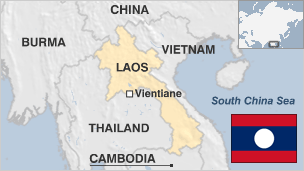Laos, one of the world’s few remaining communist states, is one of east Asia’s poorest countries. Since the collapse of the Soviet Union in 1991 it has struggled to find its position within a changing political and economic landscape.
Communist forces overthrew the monarchy in 1975, heralding years of isolation. Laos began opening up to the world in the 1990s, but despite tentative reforms, it remains poor and dependent on international donations.
The government has implemented gradual economic and business reforms since 2005 to somewhat liberalize its domestic markets. In 2011, it opened a stock market in Vientiane as part of a tentative move towards capitalism.
Economic growth since the 1990s has reduced poverty levels significantly, but Laos still relies heavily on foreign aid and investment, especially from Japan, China and Vietnam.
The Asian currency crisis of 1997 caused the national currency, the kip, to lose more than nine-tenths of its value against the US dollar.
Laos is a landlocked, mountainous country, widely covered by largely unspoilt tropical forest. Less than 5% of the land is suitable for subsistence agriculture, which nevertheless provides around 80% of employment.
Economic growth since the 1990s has reduced poverty levels significantly, but Laos still relies heavily on foreign aid and investment, especially from Japan, China and Vietnam.
The Asian currency crisis of 1997 caused the national currency, the kip, to lose more than nine-tenths of its value against the US dollar.
The main crop is rice, which is grown on the fertile floodplain of the Mekong River. Vegetables, fruit, spices and cotton are also grown. Part of the region’s heroin-producing “Golden Triangle”, Laos has all but stamped out opium production.
Outside the capital, many people live without electricity or access to basic facilities.
But Laos is banking on returns from a number of hydropower plant projects to boost its economy and infrastructure. The Nam Theun 2 dam, the largest built so far, went into operation in 2010 mainly to generate electricity for sale to Thailand.
A further significant upgrade to Laos’ infrastructure is expected with the construction of the first high-speed rail line between China and Laos.
Public dissent in Laos is dealt with harshly by the authorities, and the country’s human rights record has come under scrutiny.
Laos denies accusations of abuses by the military against the ethnic minority Hmong. Hmong groups have been fighting a low-level rebellion against the communist regime since 1975.
Source: BBC (2015)



